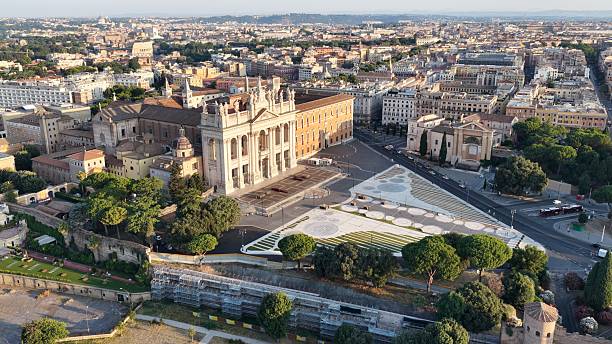A Comprehensive Guide to Exploring the Catacombs of Rome
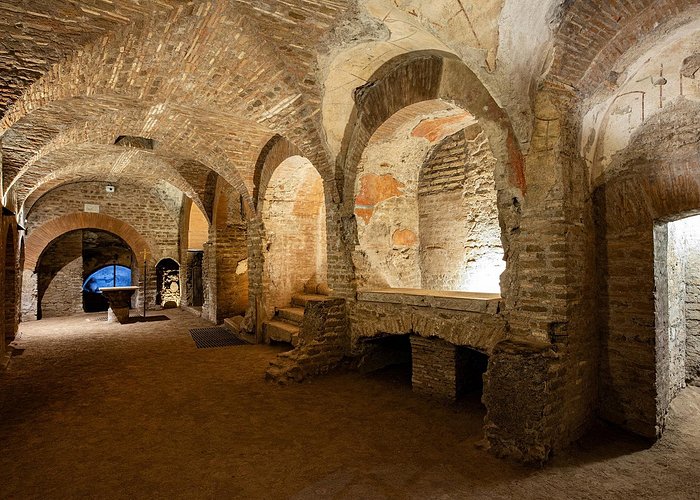
When most people think of Rome, their minds go straight to the grandeur above ground, the Colosseum, the Vatican, ancient temples, and sprawling piazzas buzzing with life. But beneath the bustling streets lies an entirely different world, Rome’s catacombs, a network of underground passageways steeped in mystery, history, and legend.
I remember my first visit vividly. Walking into the cool darkness of a Roman catacomb felt like entering a time machine. The air was still. The walls whispered stories of early Christians, hidden rituals, and lives long passed. For anyone interested in ancient history, archaeology, or the more haunting side of Roman culture, exploring the catacombs is an unforgettable experience.
Whether you’re planning your first trip or just curious about what lies beneath the Eternal City, this complete guide will walk you through everything you need to know about the catacombs of Rome, what they are, what to expect, how to visit, and why they matter.
What Are the Catacombs of Rome?
The Catacombs of Rome are underground burial sites used primarily by early Christians and Jews between the 2nd and 5th centuries AD. At a time when Christianity was still an outlawed faith, believers couldn’t bury their dead within city limits or practice their religion openly. The solution? They went underground. Literally.
Carved into the soft volcanic rock called tufa, these subterranean cemeteries stretch for miles. Archaeologists estimate that the combined length of all catacomb tunnels could reach nearly 600 kilometers (over 370 miles). That’s like walking from Rome to Milan underground!
The catacombs served not only as burial places but also as sacred spaces for prayer, reflection, and memorial services. They became symbols of community and hope during times of persecution. Over time, they evolved into holy sites where martyrs were honored and the faithful gathered to remember them.
When Christianity was legalized in the 4th century under Emperor Constantine, the need for hidden burial sites declined. Many catacombs fell into disuse and were forgotten until rediscovered by archaeologists centuries later.
The Most Famous Catacombs in Rome
While there are more than sixty catacombs scattered around Rome, only a handful are open to the public today. Each has its own story, atmosphere, and treasures waiting to be explored.
If you’re planning a visit, book a skip-the-line catacomb tour for the best experience with expert guides and easy transfers.
1. Catacombs of San Callisto (St. Callixtus)

The Catacombs of San Callisto are among the largest and most significant in Rome. Located along the ancient Appian Way, these tunnels were established in the 2nd century and became the official burial site for the Church of Rome.
Here you’ll find the Crypt of the Popes, where several early pontiffs were laid to rest. The intricate frescoes and Greek inscriptions still visible today tell stories of faith and martyrdom.
Tip: You can reserve a guided tour of the San Callisto Catacombs to explore the hidden chambers and frescoes without the crowds.
Walking through San Callisto feels like stepping into the heartbeat of early Christianity.
2. Catacombs of San Sebastiano
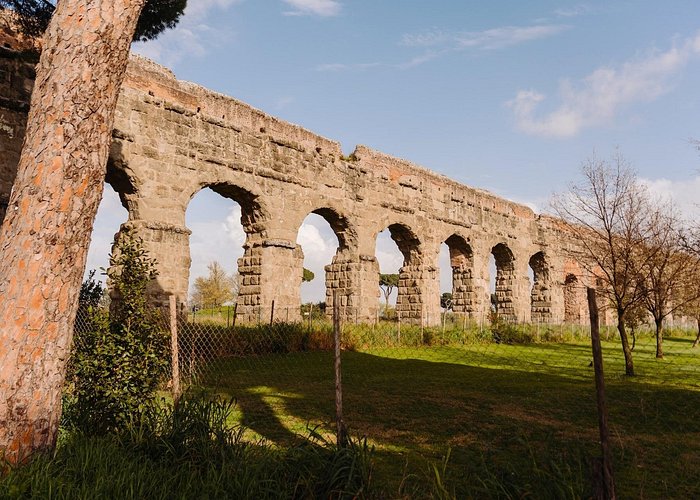
Just down the road from San Callisto lies another major site, the Catacombs of San Sebastiano. Named after Saint Sebastian, a Christian martyr executed during Emperor Diocletian’s reign. These catacombs are renowned for their art and architecture.
Combine your visit with a stroll along the Appian Way by joining a Catacombs and Appian Way walking tour.
Visitors can see ancient graffiti left by pilgrims, stunning frescoes depicting Biblical scenes, and even sections of Roman tombs predating the Christian burials. Above the catacombs stands the Basilica of San Sebastiano, adding another layer of spiritual resonance to the visit.
3. Catacombs of Domitilla
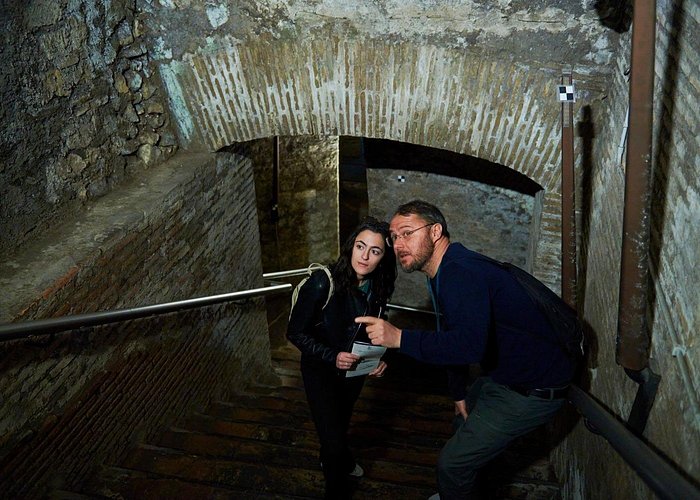
The Catacombs of Domitilla are unique because they’re the only ones that still contain bones within the burial niches. Spanning more than 17 kilometers (10 miles), they’re also among the oldest, dating back to the late 1st century.
Domitilla, a noblewoman and relative of Emperor Vespasian, donated the land for the burials. Inside, you’ll find exquisite frescoes, such as the famous image of The Good Shepherd, symbolizing Christ as a protector of souls. The catacombs also feature an underground basilica that was once a place of worship for early Christians.
4. Catacombs of Priscilla
Known as the “Queen of the Catacombs,” the Catacombs of Priscilla are celebrated for their extraordinary frescoes. These paintings, which include the earliest known depiction of the Virgin Mary with the Child Jesus, make Priscilla a must-see for art and history lovers alike.
The catacombs are located along the Via Salaria, and their walls tell stories of faith, resurrection, and divine protection. Many historians believe this site was used by noble Roman families who converted to Christianity in secret.
5. The Jewish Catacombs
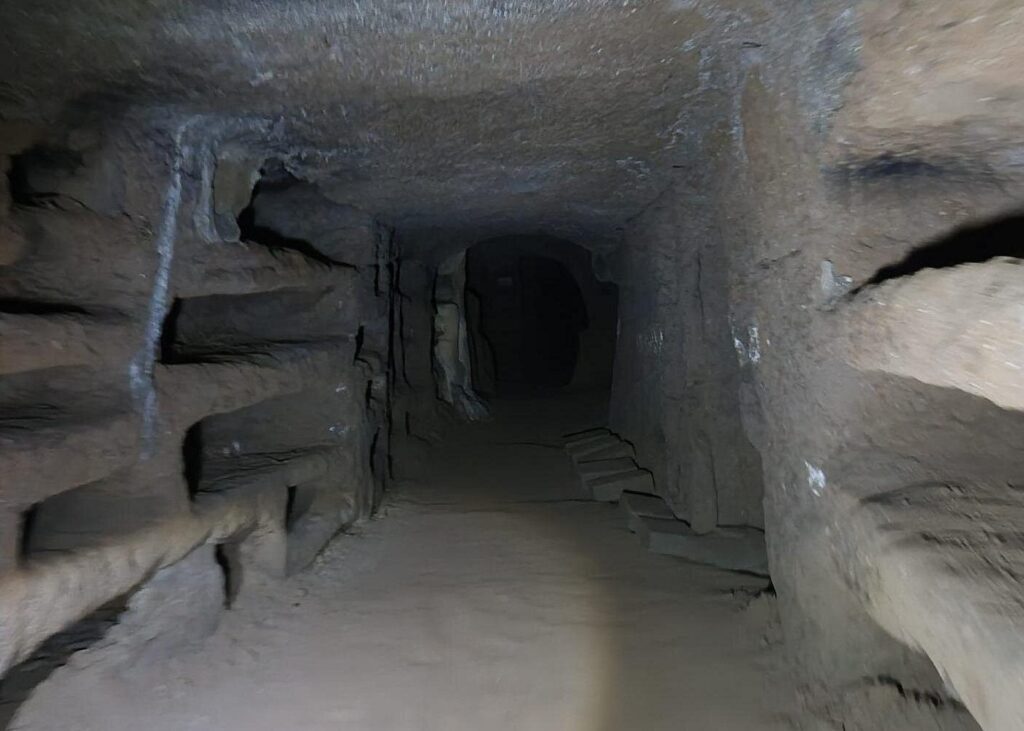
Lesser-known but equally fascinating are the Jewish Catacombs of Rome. They predate many of the Christian sites and offer rare insight into the life of Rome’s Jewish community during the early centuries AD.
To see them safely and with expert context, consider a specialized heritage tour focusing on Jewish history in Rome.
Symbols like the Menorah, Shofar, and Ark of the Covenant adorn the walls, serving as quiet witnesses to an ancient faith that thrived alongside early Christianity. The most famous Jewish catacombs are those on Vigna Randanini and Villa Torlonia.
What You’ll See Inside
Stepping into the catacombs is stepping back in time. The air is cool and slightly damp, and the narrow passageways seem endless. Yet every turn reveals something remarkable.
You’ll see:
- Niches (loculi): Long recesses carved into the walls where the dead were placed. Most are unmarked, but some bear inscriptions or symbols.
- Frescoes and mosaics: Early Christian art depicting Biblical stories and symbols such as fish (ichthys), doves, and anchors. All coded messages of faith.
- Crypts of martyrs and popes: These sacred spaces served as shrines for pilgrims who came to honor the faithful who died for their beliefs.
- Sarcophagi: Some beautifully decorated with reliefs showing scenes from Scripture or daily life in ancient Rome.
- Underground chapels: Small rooms once used for prayer services and burials, still echoing the reverence of centuries past.
It’s both humbling and awe-inspiring. The catacombs aren’t just historical sites. They’re a living testament to endurance, faith, and art in the face of adversity.
Visiting the Catacombs: Practical Information
If you’re planning to visit, here’s what you need to know.
- Opening Hours: Most catacombs are open from 9:00 AM to 12:00 PM and 2:00 PM to 5:00 PM, though schedules vary seasonally.
- Days Closed: Usually closed on Wednesdays and certain holidays, so it’s best to check ahead.
- Tickets: Prices range from €8 to €12, depending on the site. Combo tours or passes often include transport.
- Getting There: Many catacombs lie along the Via Appia Antica, about 20–30 minutes from central Rome. You can reach them via public bus (routes 118 or 218) or guided shuttle tours. Want to skip public transit? Book a half-day Catacombs & Appian Way tour with transport included for maximum convenience. For a comfortable base close to the Appian Way, browse hotels in central or southern Rome where you can find stays that balance location and value.
- What to Bring: Comfortable shoes, a light jacket (it’s chilly underground around 15°C/59°F), and no large bags.
- Photography: Usually not allowed inside to protect the delicate frescoes and artifacts.
Guided Tours vs. Self-Guided Visits
You can visit the catacombs independently, but a guided tour offers a richer experience. Here’s why.
Benefits of Guided Tours
- Context and storytelling: Guides bring the tunnels to life with historical details, spiritual insights, and stories you’d otherwise miss.
- Access to restricted areas: Some tours include sections not open to general visitors.
- Convenience: Many include transportation from central Rome, saving time and hassle.
Recommended Tour Operators
1. City Wonders Ltd – The Original Roman Crypts and Catacombs Tour with Transfers
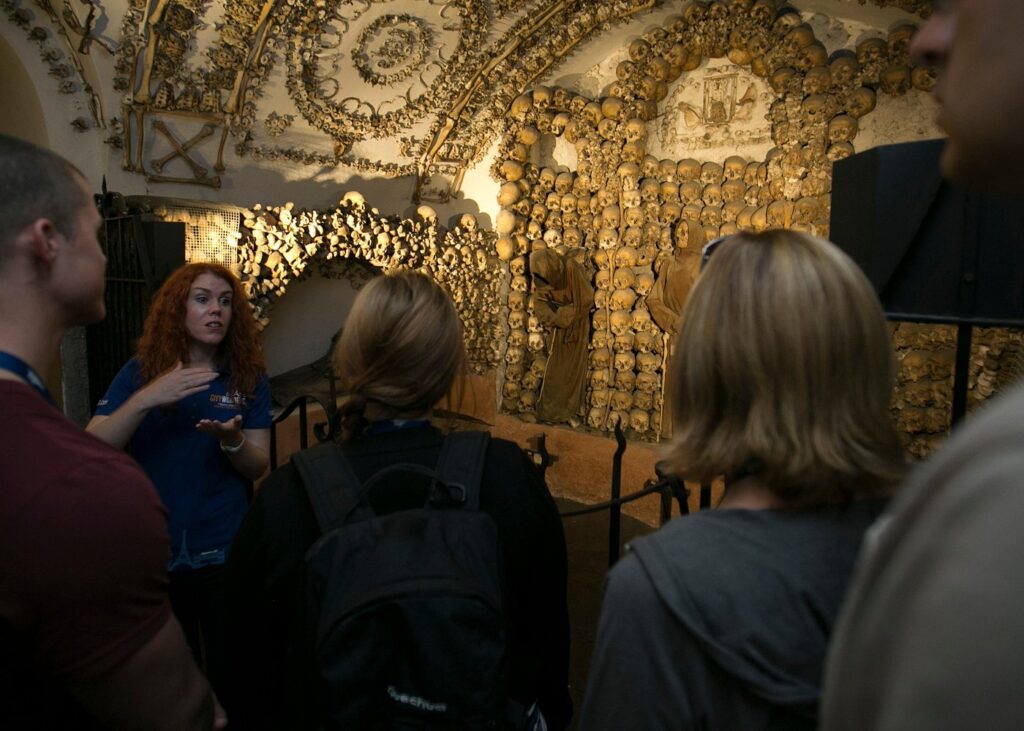
Perfect for those short on time, this tour skips long lines and combines three unique sites: the Catacombs of Rome, the Capuchin Crypt, and the Basilica San Martino ai Monti.
You’ll explore the eerie Capuchin Crypt, which houses the bones of over 4,000 monks, and learn about the basilica’s ancient underground history. With expert guides and skip-the-line entry, it’s a seamless and educational experience.
For the best value and convenience, you can book the City Wonders Catacombs Tour with transfers on Viator, which includes skip-the-line access and comfortable round-trip transport.
2. Walks – Italy & Spain (Rome Underground: Catacombs Tour, Aqueducts, and Appian Way)
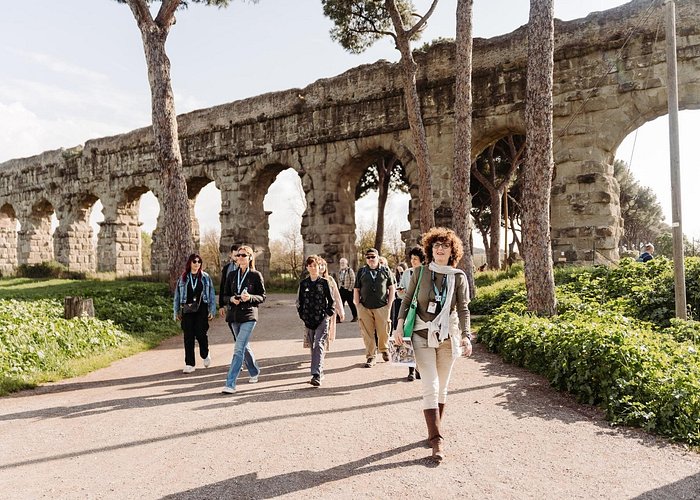
This small-group tour dives deeper into Roman history. You’ll visit the San Sebastiano Catacombs, the Mausoleum of Cecilia Metella, and sections of the Appian Way.
What makes this tour stand out is its focus on context. Your guide explains everything from early Christian rituals to the mysterious Mythraic religion, a secretive cult that once rivaled Christianity.
To join one of these immersive experiences, reserve a Walks Rome Underground Tour on Viator and uncover a side of Rome that’s rarely seen.
3. TOURIKS – Small Group Express Tour of Roman Catacombs with Transfer
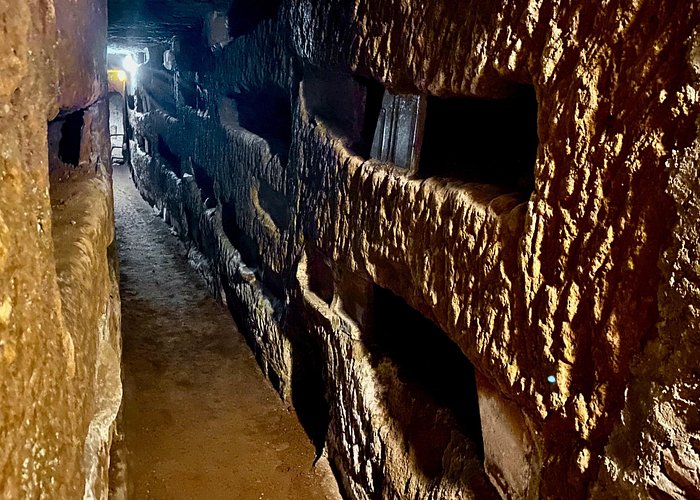
Short on time but don’t want to miss the experience? TOURIKS offers a compact yet comprehensive tour. With round-trip transfers, expert commentary, and headsets for clarity, this is ideal for history lovers who want a personalized, efficient visit.
You’ll see underground basilicas, burial chambers, and hear captivating stories that bring the past vividly to life.
You can book the TOURIKS Catacombs Express Tour via Viator for a seamless way to explore the city’s underground wonders without the logistics hassle.
Private, Small Group, or Audio-Guided Options
If you prefer flexibility, you can opt for private tours, small-group experiences, or even audio guides available at major catacombs. Private tours often allow for customized pacing and deeper exploration, while small groups ensure more interaction with the guide.
Safety, Etiquette, and Preservation
The catacombs are sacred heritage sites, not theme park attractions. Here’s how to explore them respectfully.
- Stay with your group: The tunnels are a maze, and wandering off isn’t allowed.
- No touching the walls or frescoes: Oils from skin can damage ancient artwork.
- Keep noise to a minimum: The catacombs are still considered holy ground.
- Dress modestly: These are religious sites. Cover shoulders and knees.
- No flash photography: Light can fade the pigments of ancient paintings.
- Follow instructions: Guides and signs exist to preserve the site for future generations.
Tips for a Meaningful Experience
- Go early or late in the day to avoid crowds. The morning tours are often quieter.
- Read up beforehand: Knowing the basics of early Christian history makes the visit more profound.
- Bring a small flashlight: Though guides have lights, having your own helps you notice fine details.
- Combine your visit: Pair your catacomb exploration with a walk along the Appian Way for a full day of ancient Rome immersion. Consider staying overnight nearby to explore the area at your own pace.
- Take your time: Don’t rush. The catacombs are as much about feeling the atmosphere as seeing the sights.
Myths, Legends, and Popular Culture
Few places in Rome inspire as many legends as the catacombs. Some myths have persisted for centuries:
- Myth 1: Early Christians hid in the catacombs to escape persecution.
Fact: While they did hold secret ceremonies there, the catacombs weren’t hiding places. They were cemeteries. - Myth 2: The tunnels extend under all of Rome.
Fact: They spread across several areas outside the ancient city walls, mainly along major roads like the Appian Way. - Myth 3: The catacombs are haunted.
Fact: No ghosts, just echoes of history but their quiet solemnity can certainly send chills down your spine.
In popular culture, the catacombs have appeared in films and novels that tap into their mysterious allure. From Indiana Jones-style adventures to Dan Brown’s Angels & Demons. Yet, the real stories are even more compelling, rooted in faith and resilience.
The Catacombs Beyond Rome
Rome’s underground world inspired many others. Across Italy and even beyond, you can find similar sites:
- Naples Catacombs of San Gennaro: Known for their impressive frescoes and wide corridors.
- Syracuse Catacombs of San Giovanni: Modeled after the Roman ones but with a Greek touch.
- Paris Catacombs: Perhaps the most famous outside Italy, housing the bones of over six million people.
- Alexandria, Egypt: Home to the Kom el Shoqafa catacombs, blending Roman, Greek, and Egyptian art.
These places prove that the concept of subterranean burial was more than a Roman phenomenon—it was a shared cultural expression of reverence and remembrance.
Conclusion
The Catacombs of Rome are more than an attraction. They’re a sacred, silent witness to the courage and creativity of early believers who shaped history beneath the streets of the Eternal City. Exploring them is both humbling and inspiring, a reminder that faith, art, and memory can endure for millennia.
Whether you visit as a pilgrim, historian, or curious traveler, walk with respect. Let the silence speak. And when you emerge back into the sunlight, take a moment to reflect on the journey you’ve just made through time, faith, and the very foundations of Rome itself.
If you’re ready to see this side of Rome, book your guided catacomb experience and find the perfect place to stay.
We may earn from qualifying purchases from Amazon. Learn more here.

